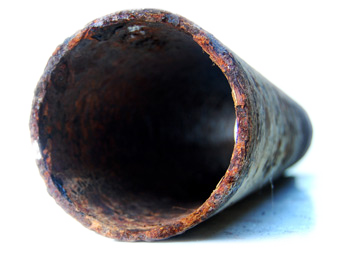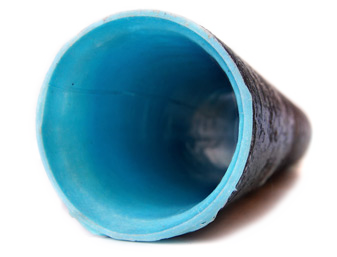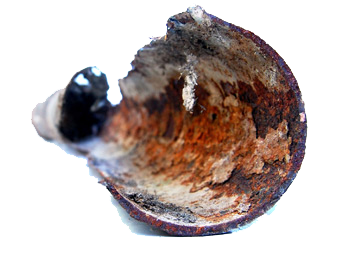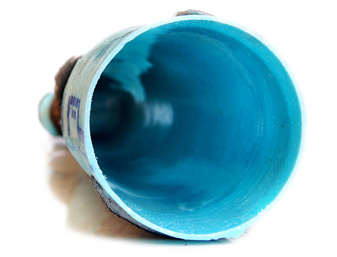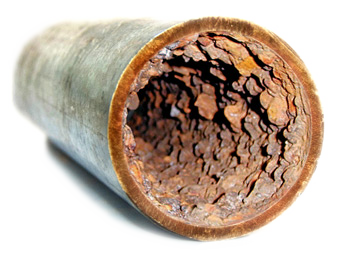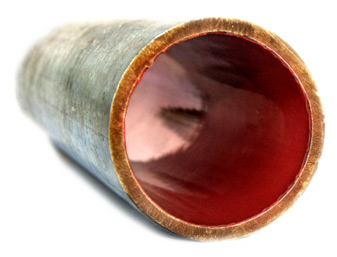Select the tabs below to see each part of our Sewer Drain Structural Liner Installation Process
Basic Steps
Video Camera Inspection of the Sewer Drain Piping
This is an important step as every situation we look at is unique. The way that we approach each project is dependent on many factors that can be determined by the video inspection.
Video Camera Inspection of the Sewer Drain Piping
This is an important step as every situation we look at is unique. The way that we approach each project is dependent on many factors that can be determined by the video inspection.
Assess the most effective replacement or rehabilitation method
If replacement is a better option due to easy accessibility of the pipes or any other factor, we’ll tell you. We only want to install structural liners in situations that are minimally disruptive and cost effective for the client.
Pipe cleaning
Specialized equipment much different than what a drain cleaning company uses will be used to unclog and descale the sewer pipe to restore the pipe to its original inner diameter.
Measurements taken
Accurate measurements are taken for both the length of the pipe to be lined as well as the diameter of the sewer pipe to be lined.
The cured in place pipe (CIPP) structural liner assembly consisting of a fabric tube and inflatable internal bladder is cut to length and assembled.
The fabric tube component of the structural liner assembly is saturated with epoxy resin and inserted into the pipe.
Once the structural liner assembly is in the proper location, the internal bladder is inflated and the structural liner expands to a tight fit inside the host pipe.
The bladder remains inflated until the chemical reaction of the epoxy resin has occurred, hardening the cured in place pipe (CIPP) structural liner inside of the old pipe.
The bladder is deflated and removed from the pipe.
Specialized robotic cutters are inserted into the pipe to cut back open any branch connections that the structural liner has blocked off.
RULE OF THUMB
A rule of thumb is that if the sewer pipe can be easily accessed without demolition of floors or walls, it is likely quicker and more cost-effective to replace the sewer pipe. It is when the pipe is difficult or impossible to access to replace that Revive Pipes cured in place pipe (CIPP) structural liner installation process is most beneficial and economical.
VIDEO COMING SOON
Myths about Revive Pipes structural liner installation
MYTH
Another lining company says that a sewer pipe cannot be lined without excavating access pits or demolishing walls even though Revive Pipes has stated we can line the pipe without destruction.
TRUTH
The other company is telling a half-truth – THEY CAN’T LINE THE PIPE without tearing apart the facility. Revive Pipes is a speciality company focusing on complex pipe configurations and we have a highly specialized suite of equipment, materials and techniques, allowing us to offer unique & specialized services to Calgary, Edmonton & Alberta that are not found elsewhere in Western Canada.
We have had a couple of instances in the past where clients have been convinced by another contractor’s salesperson that a job that we told them we could do without access pits could not be done without access pits and that we simply didn’t know what we were talking about. Consequently, we have lost projects due to this misinformation and unfortunately clients have had liners installed with significant unnecessary disruption to their facilities. We can’t line every pipe without access pits or wall openings, but if we tell you we can – we can!
MYTH
There is too much corrosion buildup in the system, so Revive Pipes can’t install a structural liner.
TRUTH
Revive Pipes uses specialized equipment and techniques to bore out the drain pipe and remove corrosion, scale and waste buildup in the pipe prior to installing a structural liner. The pipe is cleaned out until it is at or near its original inner diameter prior to lining.
MYTH
The thickness of the liner will restrict flow
TRUTH
The thickness of our structural liners vary depending on the diameter of the pipe being lined. The typical thickness ranges from 1/16 inch thick to 1/8 inch thick depending on the pipe size. We remove corrosion and scale buildup from the pipe, significantly increasing the flow area of the sewer pipe from when we arrived to work on the sewer pipe. In addition, the frictional flow coefficient of our structural liner is much less than cast iron and the liner smooths over the pipe joints reducing the effect of the original pipes inherent flow restrictions.
MYTH
The sewer pipe requiring repair is six (6) inch diameter, but only four (4) inch cleanouts are available to access the pipe, so access points will have to be excavated or larger six (6) inch cleanouts installed to be able to install a Cured in Place Pipe (CIPP) structural liner.
TRUTH
Revive Pipes can install six (6) inch diameter structural liners through four (4) inch cleanouts without any need for excavations and major disruptions to the facility. Revive Pipes technicians are specialists at this type of work, so while other contractors will tell you it can’t be done, know that we have the specialized equipment, materials and techniques to perform this type of complex structural liner installation.
MYTH
Revive Pipes are the leading experts in Alberta at lining small diameter sewer pipes with complex configurations.
TRUTH
THIS MYTH IS ACTUALLY TRUE! We are Alberta’s pipe restoration specialists at lining small diameter sewer pipes inside of buildings. Our project portfolio, proprietary tooling and techniques make us the top small diameter lining company in Western Canada.
Types of Sewer Drain Pipes We Line Inside of Buildings
Vertical Stacks
This is the accordion body content. It is typically best to keep this area short and to the point so it isn’t too overwhelming.
Sanitary Drain Stacks
This is the accordion body content. It is typically best to keep this area short and to the point so it isn’t too overwhelming.
Sanitary Vent Stacks
This is the accordion body content. It is typically best to keep this area short and to the point so it isn’t too overwhelming.
Sanitary Waste Stacks
This is the accordion body content. It is typically best to keep this area short and to the point so it isn’t too overwhelming.
Kitchen Stacks
This is the accordion body content. It is typically best to keep this area short and to the point so it isn’t too overwhelming.
Storm Water Leaders
This is the accordion body content. It is typically best to keep this area short and to the point so it isn’t too overwhelming.
Storm Water Leaders
This is the accordion body content. It is typically best to keep this area short and to the point so it isn’t too overwhelming.
Horizontal Sewer Drain Pipes
This is the accordion body content. It is typically best to keep this area short and to the point so it isn’t too overwhelming.
Horizontal Waste Pipes
This is the accordion body content. It is typically best to keep this area short and to the point so it isn’t too overwhelming.
Toilet Drain Pipes
This is the accordion body content. It is typically best to keep this area short and to the point so it isn’t too overwhelming.
Swimming Pool Drain Pipes
This is the accordion body content. It is typically best to keep this area short and to the point so it isn’t too overwhelming.
Hot Tub Drain Pipes
This is the accordion body content. It is typically best to keep this area short and to the point so it isn’t too overwhelming.
Sink Drain Lines
This is the accordion body content. It is typically best to keep this area short and to the point so it isn’t too overwhelming.
45 Degree Fittings
This is the accordion body content. It is typically best to keep this area short and to the point so it isn’t too overwhelming.
Wye Fittings
This is the accordion body content. It is typically best to keep this area short and to the point so it isn’t too overwhelming.
Tee Fittings
This is the accordion body content. It is typically best to keep this area short and to the point so it isn’t too overwhelming.
Branch Connections
This is the accordion body content. It is typically best to keep this area short and to the point so it isn’t too overwhelming.
P-Traps
This is the accordion body content. It is typically best to keep this area short and to the point so it isn’t too overwhelming.
Electrical Conduit
This is the accordion body content. It is typically best to keep this area short and to the point so it isn’t too overwhelming.
Condensate Drains
This is the accordion body content. It is typically best to keep this area short and to the point so it isn’t too overwhelming.
Move the slider to see the transformation

